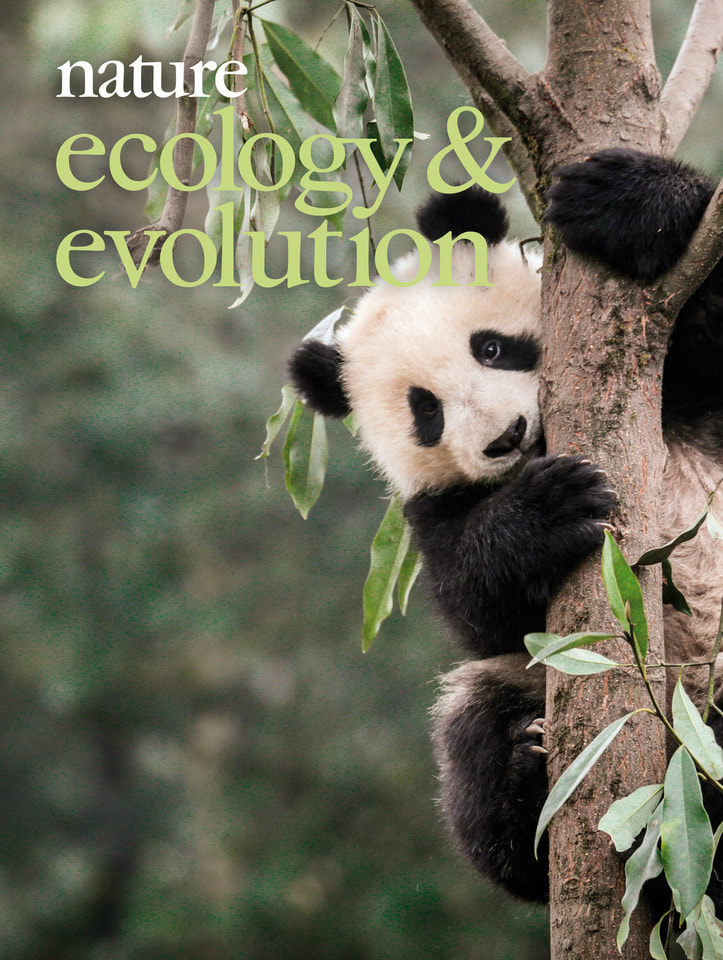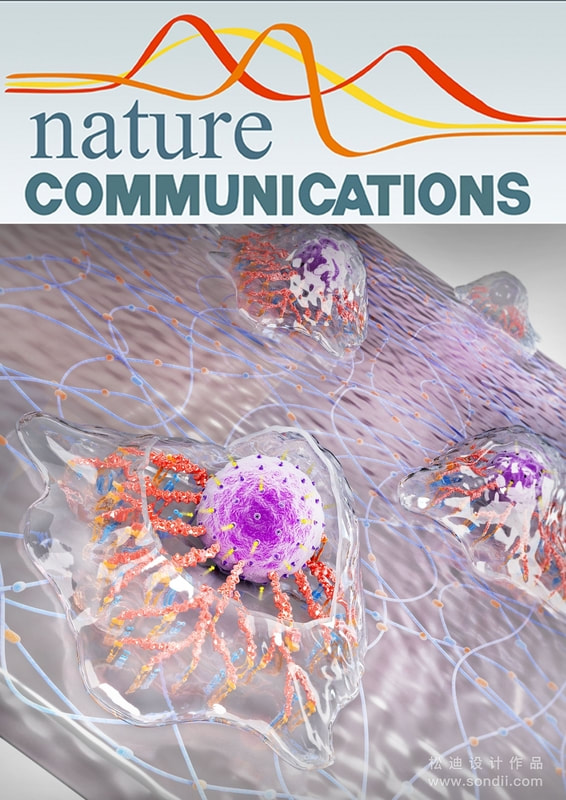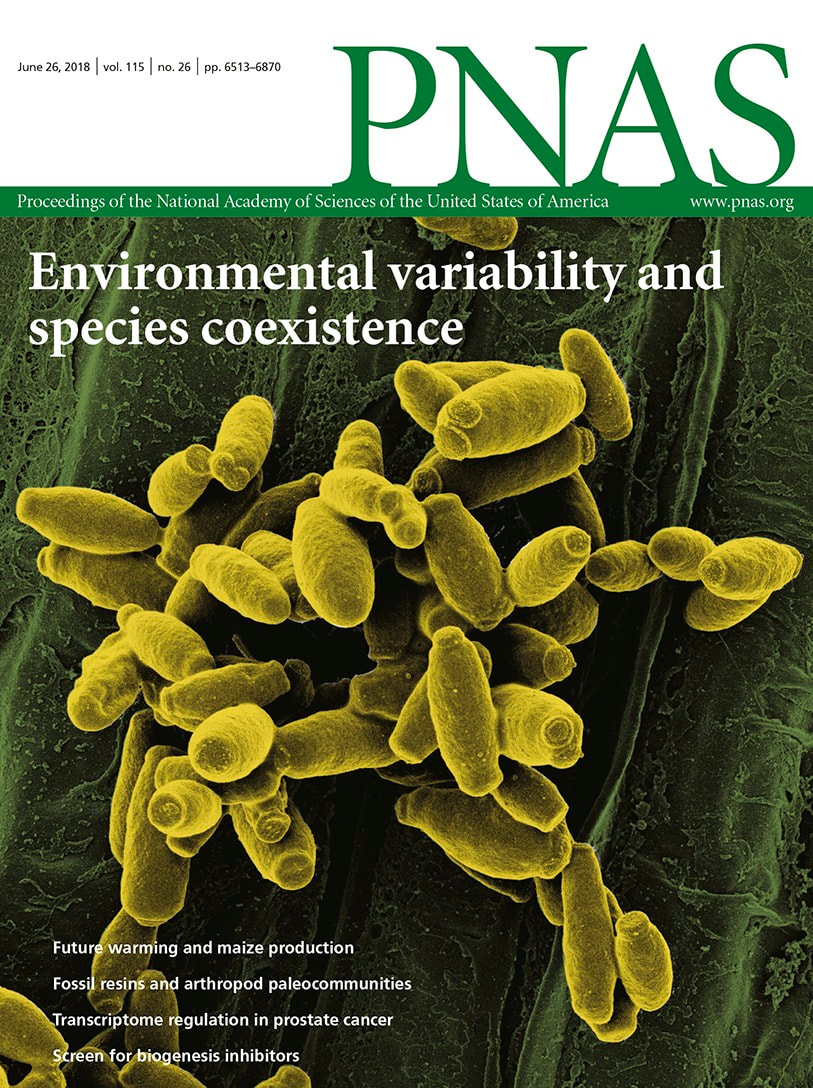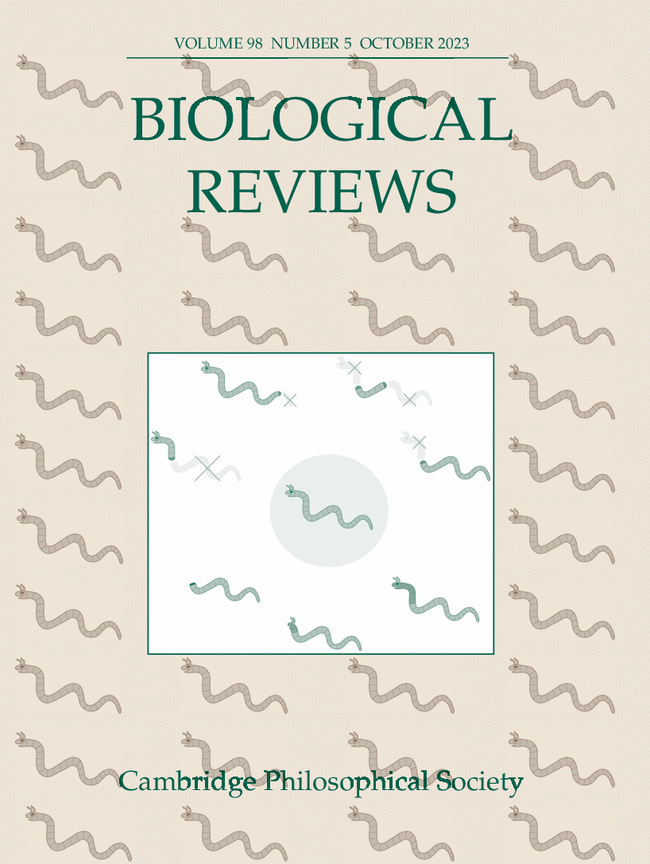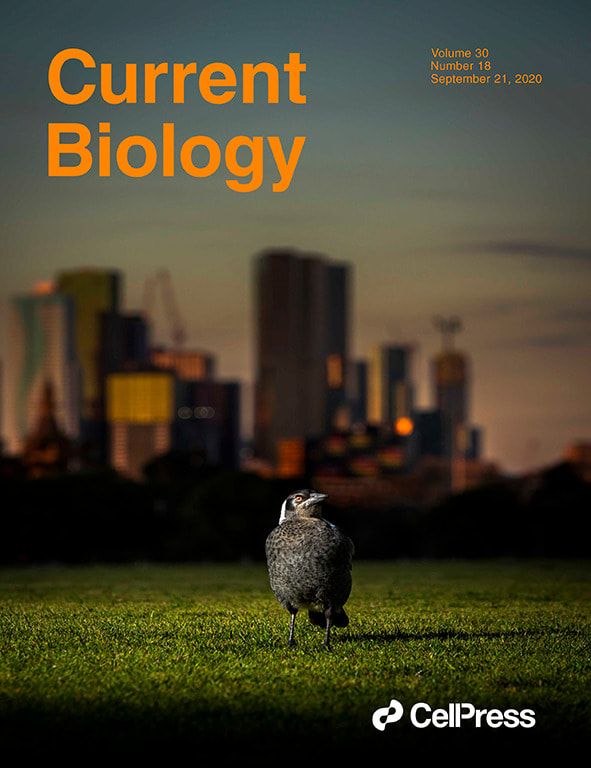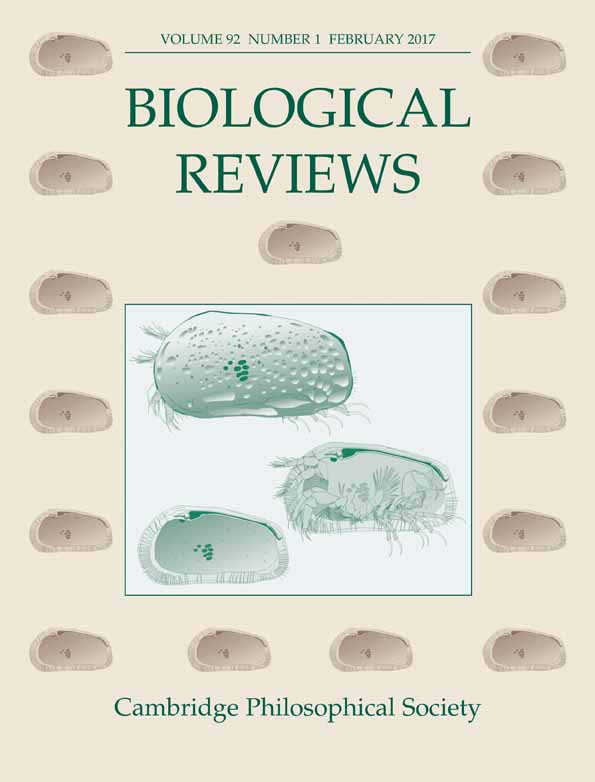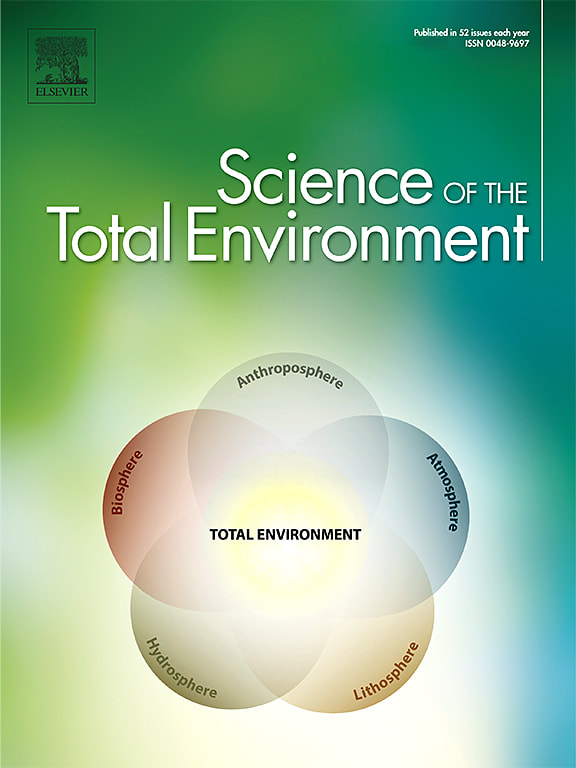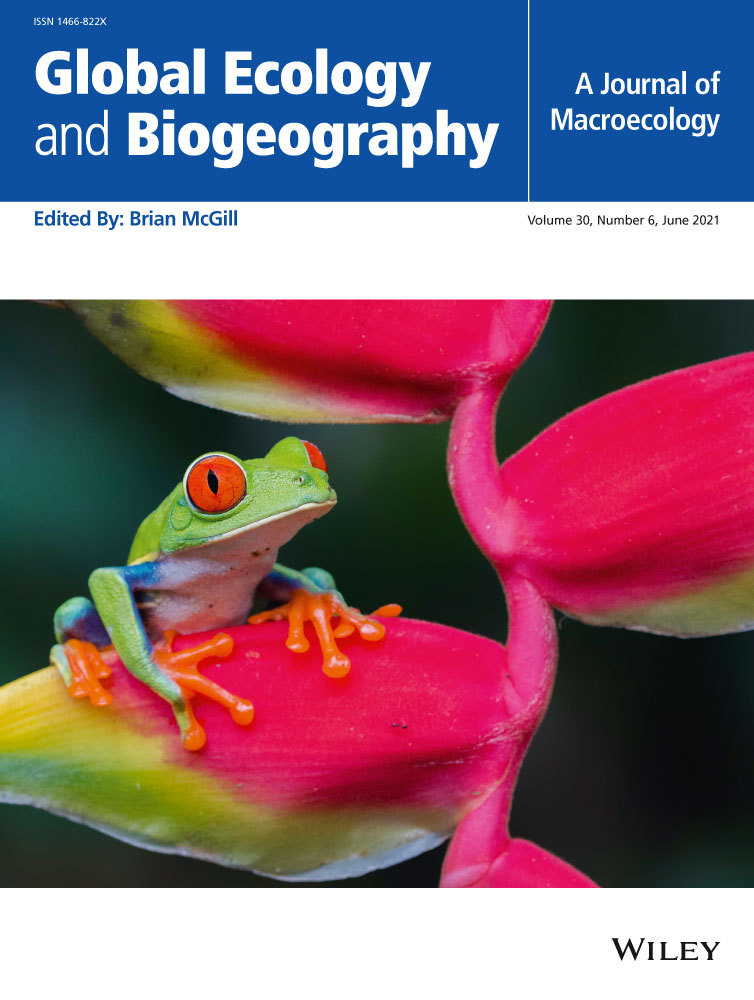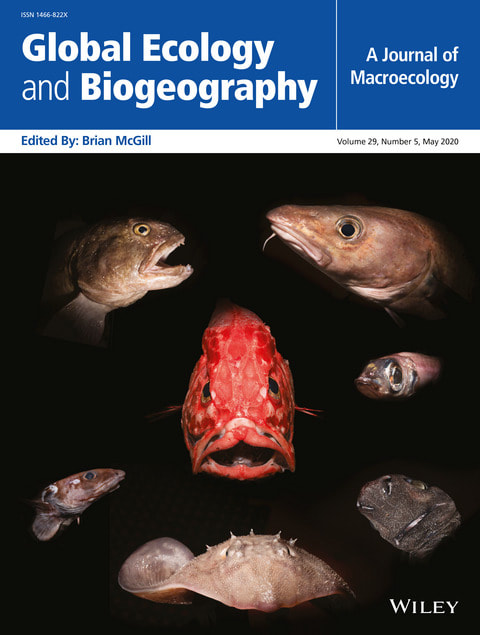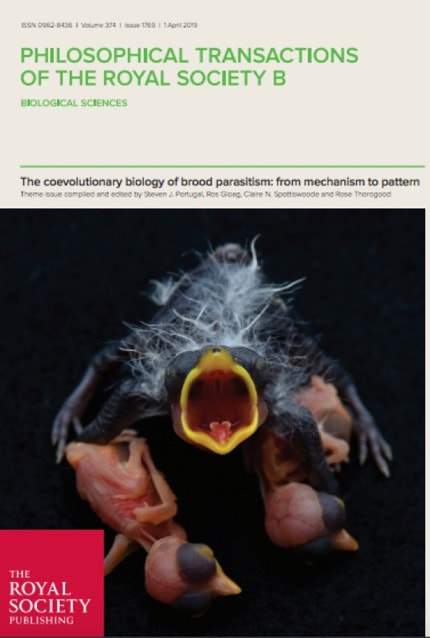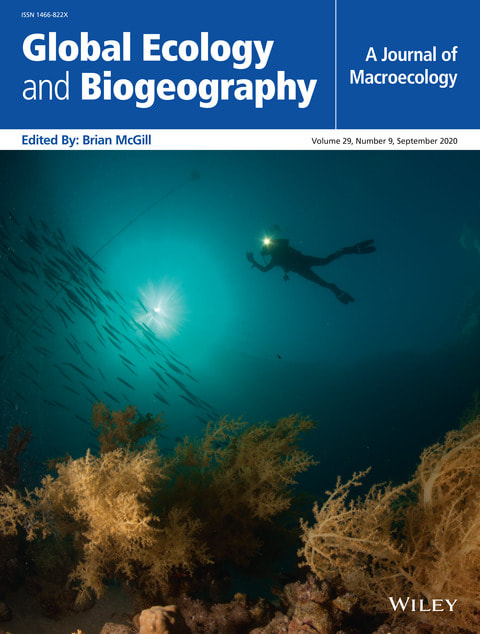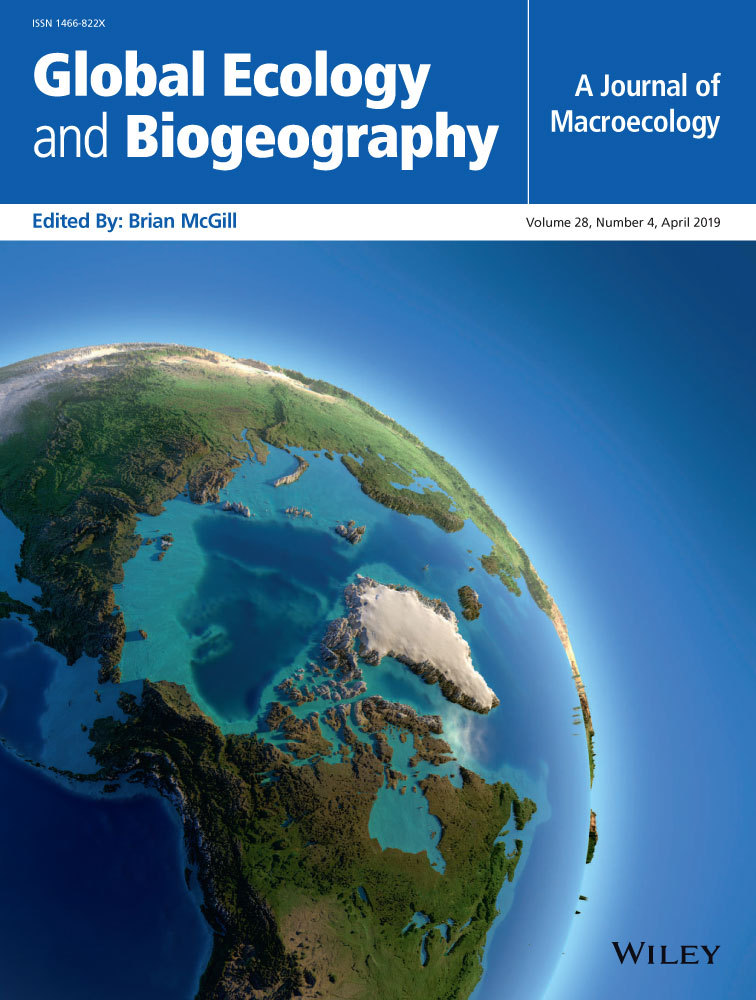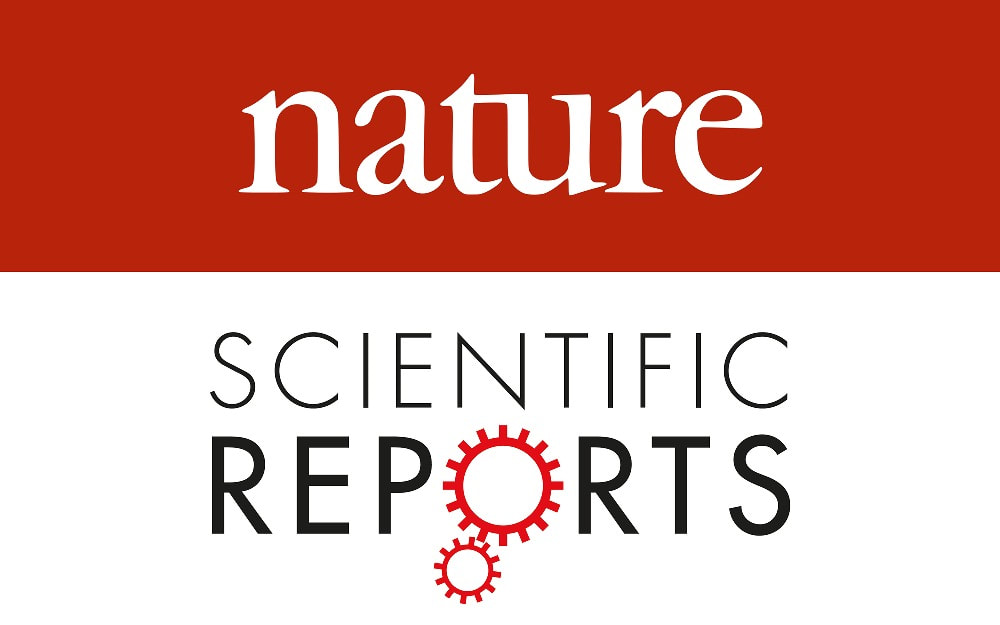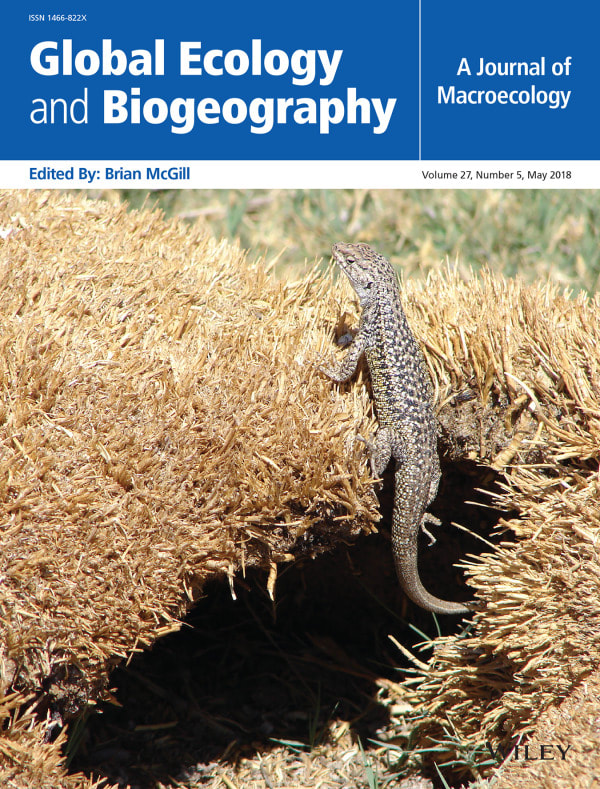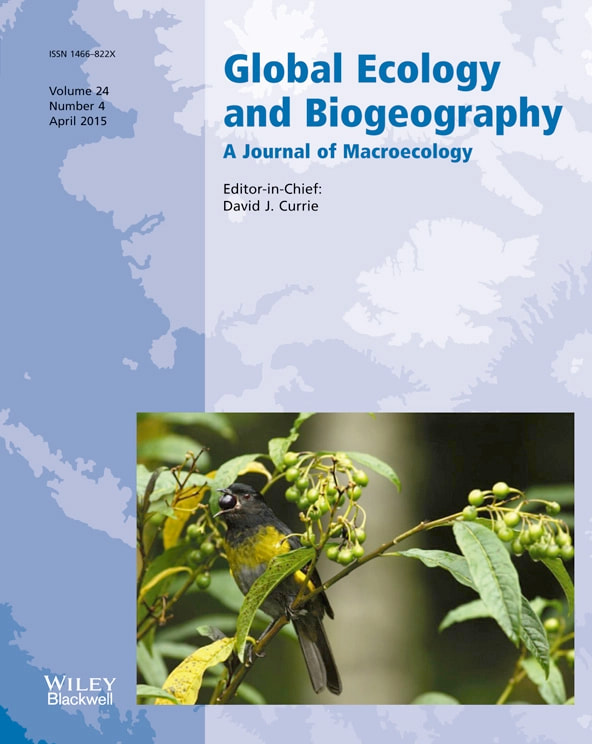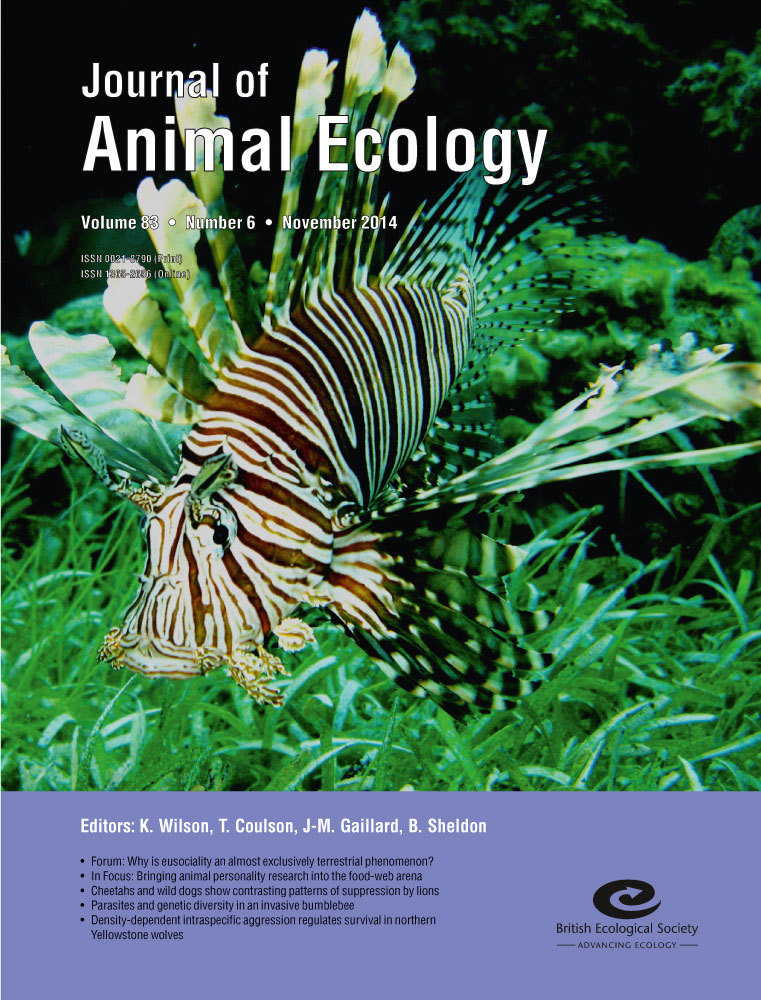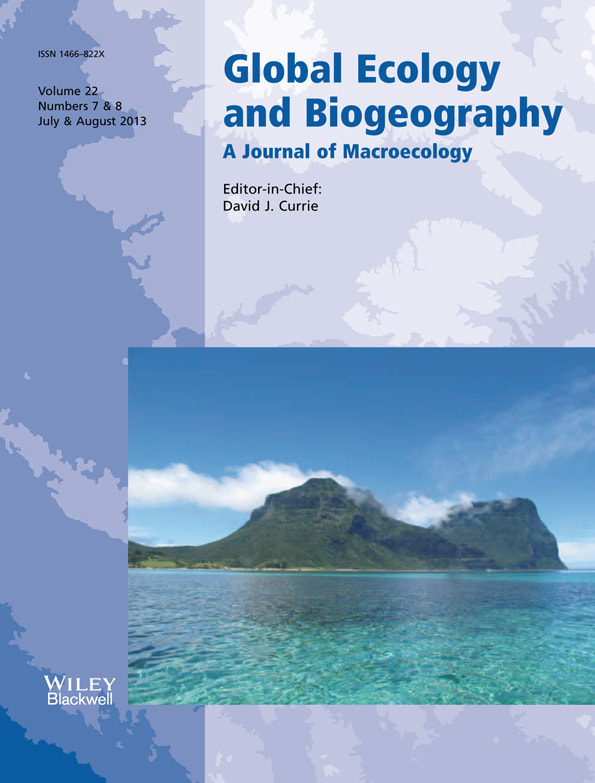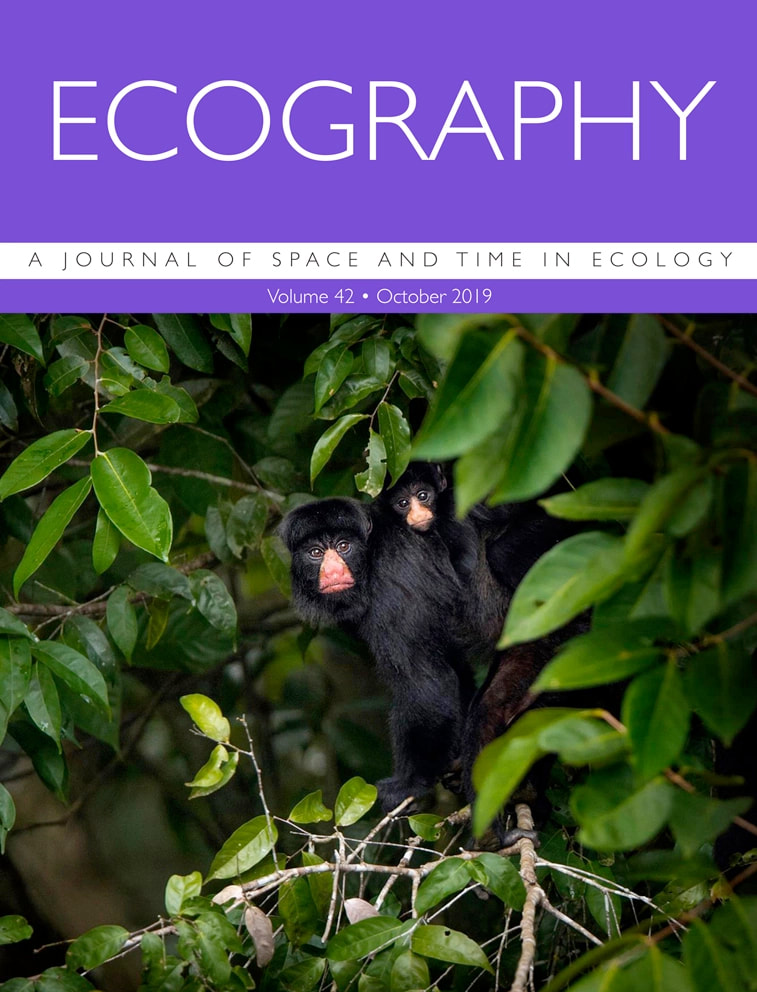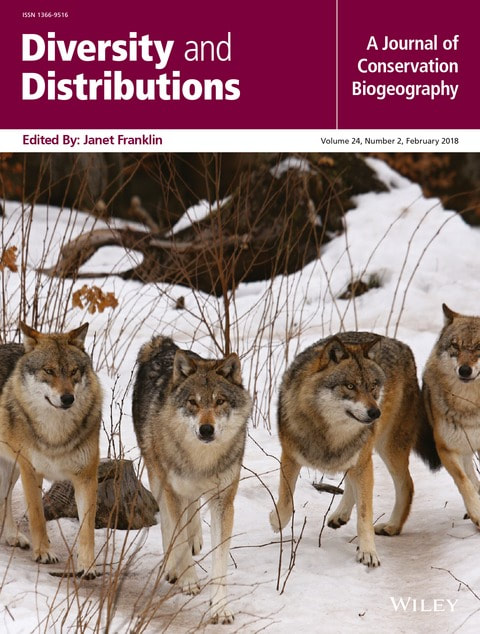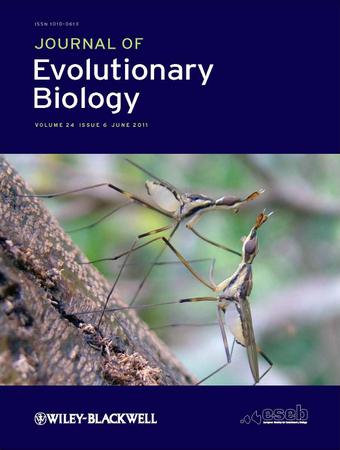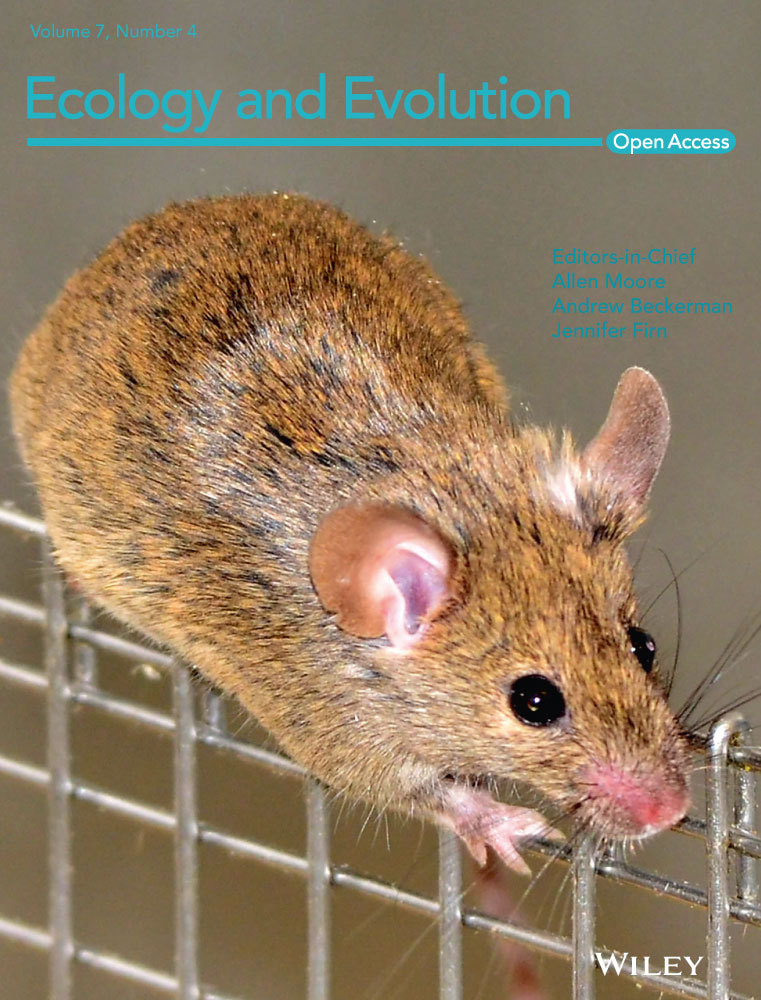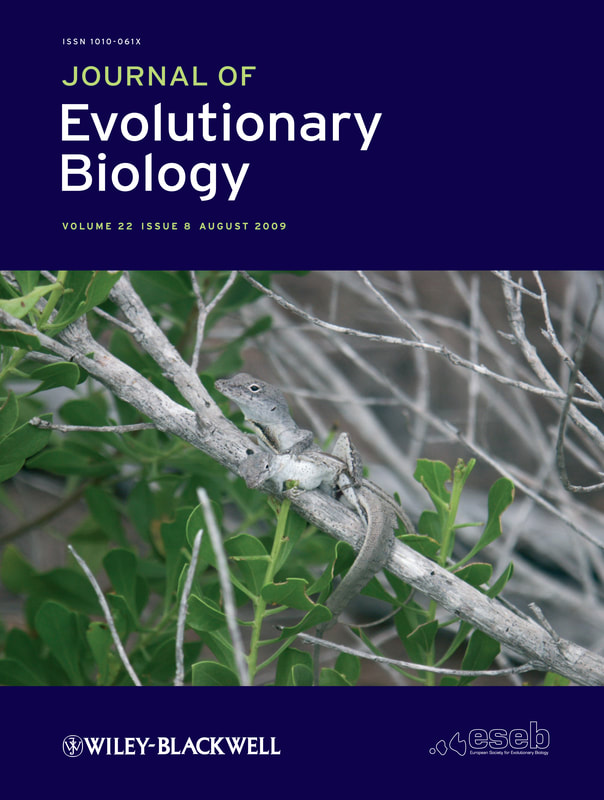Publications | Books |
|
2024-2023
[123] Goodyear, L.E.B., Olson, D.H., Ronnenberg, K.L. & Pincheira-Donoso, D. (2024). Current global-scale amphibian declines are not associated with chytrid fungus. (In Review). [122] Haubrock, P. J., Soto, I., Ahmed, D.A., Ansari, A.R., Tarkan, A.S., Kurtul, I., Macedo, R.L., Lázaro-Lobo, A., Toutain, M., Parker, B., Błońska, D., Guareschi, S., Cano-Barbacil, C., Dominguez-Almela, V., Andreou, D., Moyano, J., Akalın, S., Kaya, C., Bayçelebi, E., Yoğurtçuoğlu, B., Briski, E., Aksu, S., Emiroğlu, O., Mammola, S., De Santis, V., Kourantidou, M., Pincheira-Donoso, D., Britton, J.R., Kouba, A., Dolan, E.J., Kirichenko, N.I., García-Berthou, E., Renault, D., Fernandez, R.D., Yapıcı, S., Giannetto, D., Nuñez, M.A., Hudgins, E.J., Pergl, J., Milardi, M., Musolin, D.L. & Cuthbert, R.N. (2024). Biological invasions are a population-level rather than a species-level phenomenon. Global Change Biology (accepted, pending minor revision). [121] Soto, I., Balzani, P., Carneiro, L., Cuthbert, R., Macedo, R., Serhan, Ali., Ahmed, D., Bang, A., Bacela-Spychalska, K., Bailey, S., Baudry, T., Ballesteros, L., Bortolus, A., Briski, E., Britton, R., Buric, M., Camacho-Cervantes, M., Cano-Barbacil, C., Copilaș-Ciocianu, D., Coughlan, N., Courtois, P., Csabai, Z., Dalu, T., De Santis, V., Dickey, J., Dimarco, R., Falk-Andersson, J., Fernandez, R., Florencio, M., Franco, A.C., García-Berthou, E., Giannetto, D., Glavendekic, M., Grabowski, M., Heringer, G., Herrera, I., Huang, W., Kamelamela, K., Kirichenko, N., Kouba, A., Kourantidou, M., Kurtul, I., Laufer, G., Lipták, B., Liu, C., López-López, E., Lozano, V., Mammola, S., Marchini, A., Meshkova, V., Mayerson, L., Milardi, M., Musolin, D., Nuñez, M., Oficialdegui, F., Pattison, Z., Petrusek, A., Pincheira-Donoso, D., Piria, M., Probert, A., Rasmussen, J., Renault, D., Ribeiro, F., Rilov, G., Robinson, T., Sanchez, A., Schwindt, E., South, J., Stoett, P., Verreycken, H., Vilizzi, L., Wang, Y., Watari, Y., Wehi, P., Weiperth, A., Wiberg-Larsen, P., Yapıcı, S., Yoğurtçuoğlu, B., Zenni, R., Galil, B., Dick, J., Russell, J., Ricciardi, A., Simberloff, D., Bradshaw, C. & Haubrock, P. (2024). Taming the terminological tempest in invasion science. Biological Reviews (In Press). [120] Cuthbert, R.N., Dick, J.T.A., Haubrock, P.J., Pincheira-Donoso, D., Soto, I. & Briski, E. (2024). Economic impact disharmony in global biological invasions. Science of the Total Environment, 913: 169622. [119] Shahar, D...[37 co-authors], Pincheira-Donoso, D., Schwarz, R., Shermeister, B., Theisinger, O., Theisinger, W., Tolley, K., Torres-Carvajal, O., Valdecantos, S., Van Damme, R., Wapstra, E., While, G., Levin, E. & Meiri, S. (2024). A global analysis of squamate body temperatures during activity and their relation to environmental temperature, behaviour, and geography. Global Ecology and Biogeography (In Press). [118] Ocampo, M., Pincheira-Donoso, D. & Rios, R.S. (2024). Patterns of morphological diversification are influenced by dietary evolution in a highly species-rich lizard radiation. Frontiers in Ecology and Evolution (In Press). [117] Raz, T., Allison, A., Avila, L., Bauer, A., Böhm, M., de Oliveira Caetano, G., Colli, G., Doan, T., Doughty, P., Grismer, L., Itescu, Y., Kraus, F., Martins, M., Morando, M., Murali, G., Nagy, Z., Nogueira, C., Novosolov, M., Oliver, P., Passos, P., Pincheira-Donoso, D., Sindaco, R., Slavenko, A., Torres-Carvajal, O., Uetz, P., Wagner, P., Zimin, A., Roll, U. & Meiri, S. (2024). Diversity gradients of terrestrial vertebrates - substantial variations about a common theme. Journal of Zoology, 322: 126-140. [116] Kallivalappil, R., Grattarola, F., Cotter, S. & Pincheira-Donoso, D. (2024). Species diversity and extinction risk of vertebrate pollinators in India. Biodiversity and Conservation (In Press). [115] Mi, Ch., Ma, L., Yang, M., Li, X., Meiri, S., Roll, U., Oskyrko, O., Pincheira-Donoso, D., Harvey, L.P., Jablonski, D., Safaei-Mahroo, B., Ghaffari, H., Smid, J., Jarvie, S., Mwangi, R., Masroor, R., Kazemi, S., Nneji, L., Fokoua, A., Taboue, G.C.T., Bauer, A., Nogueira, C., Meirte, D., Chapple, D., Das, I., Grismer, L., Avila, L., Ribeiro-Junio, M., Tallowin, O., Torres-Carvajal, O., Wagner, P., Ron, S., Wang, Y., Itescu, Y., Nagy, Z., Wilcove, D. & Liu, X. (2023). Global Protected Areas as refuges for amphibians and reptiles under climate change. Nature Communications, 14: 1389. Access article. [114] Finn, C., Grattarola, F. & Pincheira-Donoso, D. (2023). More losers than winners: Anthropocene defaunation through the diversity of population trends. Biological Reviews. Online Early. [113] Johnson, J.V., Finn, C., Guirguis, J., Goodyear, L.E.B., Harvey, L.P., Magee, R., Ron, S. & Pincheira-Donoso, D. (2023). What drives the evolution of body size in ectotherms? A global analysis across the amphibian tree of life. Global Ecology and Biogeography, 32: 1311-1322. [112] Johnson, J., Dick, J. & Pincheira-Donoso, D. (2023). A global analysis of coral bleaching patterns in association with mangrove environments under global warming. Ecography. Online Early. [111] Guirguis, J., Johnson, J. & Pincheira-Donoso, D. (2023). Do mountains increase extinction risk of the world’s amphibian biodiversity?. Global Ecology and Biogeography (Accepted, pending minor revision). [110] Pincheira-Donoso, D., Harvey, L.P., Johnson, J.V., Hudson, D., Finn, C., Goodyear, L.E.B., Guirguis, J., Hyland, E.M. & Hodgson, D.J. (2023). Genome size does not influence extinction risk in the world’s amphibians. Functional Ecology, 37: 190-200. PDF [109] Pincheira-Donoso, D., Harvey, L.P., Guirguis, J., Goodyear, L.E.B., Finn, C., Johnson, J.V. & Grattarola, F. (2023). Temporal and spatial patterns of vertebrate extinctions during the Anthropocene. bioRxiv forthcoming. PDF 2022-2021 [108] Johnson, J.V., Dick, J. & Pincheira-Donoso, D. (2022). Local anthropogenic stress does not exacerbate coral bleaching under global climate change. Global Ecology and Biogeography, 31:1228-1236. PDF [107] Stark, G. & Pincheira-Donoso, D. (2022). The evolution of brain size in ectothermic tetrapods: large brain mass trades-off with lifespan in reptiles. Evolutionary Biology, 49: 180-188. [106] Zimin, A., Zimin, S.V., Shine, R., Feldman, A., Bauer, A., Böhm, M., Brown, R., de Oliveira Caetano, G., Castro-Herrera, F., Chapple, D.G., Chirio, L., Colli, G.R., Doan, T.M., Glaw, F., Grismer, L.L., Itescu, Y., Kraus, F., LeBreton, M., Martins, M., Morando, M., Murali, G., Nagy, Z.T., Novosolov, M., Oliver, P., Passos, P., Pauwels, O.S.G., Pincheira-Donoso, D., Ribeiro Junior, M.A., Shea, G., Tingley, R., Torres-Carvajal, O., Trape, J.F., Uetz, P., Wagner, P., Roll, U. & Meiri, S. (2022). A global analysis of viviparity in squamates highlights its prevalence in cold climates and high elevations. Global Ecology and Biogeography, 31: 2437-2452. [105] Johnson, J.V., Dick, J. & Pincheira-Donoso, D. (2022). Marine protected areas do not buffer corals from bleaching under global warming. BMC Ecology and Evolution, 22: 58. PDF [104] Ocampo, M., Pincheira-Donoso, D., Sayol, F. & Rios, R.S. (2022). Evolutionary transitions in diet as drivers of the exceptional diversification of a lizard adaptive radiation. BMC Ecology and Evolution, 2: 1-10. [103] Johnson, J.V., Exton, D., Dick, J., Oakley, J. & Pincheira-Donoso, D. (2022). Disparity in responses of Honduran and Indonesian coral reef systems to global warming. Ecology and Evolution, 12: e9263. [102] Pincheira-Donoso, D., Harvey, L.P., Cotter, S.C., Stark, G., Meiri, S. & Hodgson, D.J. (2021) The global macroecology of brood size in amphibians reveals a predisposition of low-fecundity species to extinction. Global Ecology and Biogeography, 30: 1299-1310. Cover [101] Pincheira-Donoso, D., Harvey, L.P., Grattarola, F., Jara, M., Cotter, S.C., Tregenza, T. & Hodgson, D.J. (2021). The multiple origins of sexual size dimorphism in global amphibians. Global Ecology and Biogeography, 30: 443-458. [100] Amado, T.F., Martinez, P.A., Pincheira-Donoso, D. & Olalla-Tárraga, M.A. (2021). Body size distributions in anurans are explained by diversification rates and the environment. Global Ecology & Biogeography, 30: 154-164. [99] Chapple, D.G., Roll, U., Bohm, M., Aguilar, R., Amey, A.P., Austin, C.C., Baling, M., Barley, A.J., Bates, M.F., Bauer, A.M., Blackburn, D.G., Bowles, P., Brown, R.M., Chandramouli, S.R., Chirio, L., Cogger, H., Colli, G.R., Conradie, W., Couper, P.J., Cowan, M.A., Craig, M.D., Das, I., Datta-Roy, A., Dickman, C.R., Ellis, R.J., Fenner, A.L., Ford, S., Ganesh, S.R., Garnder, M.G., Geissler, P., Gillespie, G.R., Glaw, F., Greenlees, M.J., Griffith, O.W., Grismer, L.L., Haines, M.L., Harris, D.J., Hedges, S.B., Hitchmough, R.A., Hoskin, C.J., Hutchinson, M.N., Ineich, I., Janssen, J., Johnston, G.R., Karin, B.R., Keogh, J.S., Kraus, F., LeBreton, M., Lymberakis, P., Masroor, R., McDonald, P.J., Mecke, S., Melville, J., Melzer, S., Michael, D.R., Miralles, A., Mitchell, N.J., Nelson, N.J., Nguyen, T.Q., Campos Nogueira, C., Ota, H., Pafilis, P., Pauwels, O.S.G., Perera, A., Pincheira-Donoso, D., Reed, R.N., Ribeiro-Junior, M.A., Riley, J.L., Rocha, S., Rutherford, P.L., Sadlier, R.A., Shacham, B., Shea, G.M., Shine, R., Slavenko, A., Stow, A., Sumner, J., Tallowin, O.J.S., Teale, R., Torres-Carvajal, O., Trape, J.F., Uetz, P., Ukuwela, K.D.B., Valentine, L., Van Dyke, J.U., van Winkel, D., Vasconcelos, R., Vences, M., Wagner, P., Wapstra, E., While, G.M., Whiting, M.J., Whittington, C.M., Wilson, S., Ziegler, T., Tingley, R. & Meiri, S. (2021). Conservation status of the world's skinks (Scincidae): taxonomic and geographic patterns in extinction risk. Biological Conservation, 257: 109101. [98] Pincheira-Donoso, D. (2021). Correlated evolution between herbivory and gastrointestinal tract in a prolific lizard adaptive radiation. Animal Biology, 71: 233-241. 2020-2019 [97] Stark, G., Pincheira-Donoso, D. & Meiri, S. (2020). No evidence for the rate of living theory across the tetrapod tree of life. Global Ecology and Biogeography, 29, 857-884. [96] Meiri, S., Avila, L., Bauer, A.M., Chapple, D.G., Das, I., Doan, T.M., Doughty, P., Ellis, R., Grismer, L., Kraus, F., Morando, M., Oliver, P., Pincheira-Donoso, D., Ribeiro-Junior, M.A., Shea, G., Torres-Carvajal, O., Slavenko, A. & Roll, U. (2020). The global diversity and distribution of lizard clutch sizes. Global Ecology and Biogeography, 29: 1515-1530. [95] Grattarola, F., Martínez-Lanfranco, J.A., Botto, G., Naya, D. E., Maneyro, R., Mai, P., Hernández, D., Laufer, G., Ziegler, L., Gonzalez, E.M., da Rosa, I., Gobel, N., Gonzalez, A., Gonzalez, J., Rodales, A.L. & Pincheira-Donoso, D. (2020). Multiple forms of hotspots of tetrapod biodiversity and the challenges of open-access data scarcity. Nature Scientific Reports, 10: 22045. pdf [94] Pincheira-Donoso, D. (2020). The macroecology of macroeconomics in human evolution. Current Biology, 30, R1012-1014. pdf [93] Grattarola, F., Gonzalez, A., Mai, P., Cappuccio, L., Fagundez-Pachon, C., Rossi, F., Teixeira de Mello, F., Urtado, L. & Pincheira-Donoso, D. (2020). Biodiversidata: a novel dataset for the vascular plant species diversity in Uruguay. Biodiversity Data Journal, 8: e56850. [92] Cotter, S.C., Pincheira-Donoso, D. & Thorogood, R. (2019). Defences against brood parasites from a social immunity perspective. Philosophical Transactions of the Royal Society of London B, Biological Sciences, 374: 0180207. pdf. [91] Pincheira-Donoso, D., Meiri, S., Jara, M., Olalla-Tarraga, M.A. & Hodgson, D.J. (2019). Global patterns of body size evolution are driven by precipitation in legless amphibians. Ecography, 42: 1682-1690. [90] Slavenko, A., Feldman, A., Allison, A., Bauer, A.M., Böhm, M., Chirio, L., Colli, G.R., Das, I., Doan, T.M., LeBreton, M., Martins, M., Meirte, D., Nagy, Z.T., Nogueira, C.C., Pauwels, O.S.G., Pincheira-Donoso, D., Roll, U., Wagner, P., Wang, Y., Meiri, S. (2019). Global patterns of body size evolution in squamate reptiles are not driven by climate. Global Ecology and Biogeography, 28: 471-483. Early View Here. [89] Jara, M., García-Roa, R., Escobar, L.E., Torres-Carvajal, O. & Pincheira-Donoso, D. (2019). Alternative reproductive adaptations predict asymmetric responses to climate change in lizards. Nature Scientific Reports, 9: 5093. pdf. [88] Vidan, E., Bauer, A., Castro, F., Chirio, L., Nogueira, C., Doan, T., Hoogmoed, M., Lewin, A., Meirte, D., Nagy, Z., Novosolov, M., Pincheira-Donoso, D., Tallowin, O., Torres-Carvajal, O., Uetz, P., Wagner, P., Wang, Y., Belmaker, J. & Meiri, S. (2019). The global biogeography of lizard functional groups. Journal of Biogeography, 46: 2147-2158. [87] Lambert, J., Reichard, M. & Pincheira-Donoso, D. (2019). Live fast, diversify non-adaptively: evolutionary diversification of exceptionally short-lived annual killifishes. BMC Evolutionary Biology, 19: 10. pdf. [86] Hickcox, R.P., Jara, M., Deacon, L.A.K., Harvey, L.P. & Pincheira-Donoso, D. (2019). Global terrestrial distribution of penguins (Spheniscidae) and their conservation by protected areas. Biodiversity and Conservation. (Online Early). pdf. [85] Font, E., García-Roa, R., Pincheira-Donoso, D. & Carazo, P. (2019). Re-thinking the effects of body size on the study of brain size evolution. Brain, Behavior and Evolution, 93: 182-195. [84] Grattarola, F., Botto, G., da Rosa, I., Gobel, N., González, E.M., González, J., Hernández, H., Laufer, G., Maneyro, R., Martínez-Lanfranco, J.A., Naya, D.E., Rodales, A.L., Ziegler, L. & Pincheira-Donoso, D. (2019). Biodiversidata: an open-access biodiversity database for Uruguay. Biodiversity Data Journal, 7: e36226. pdf. [83] Grattarola, F. & Pincheira-Donoso, D. (2019). Biodiversidata: A Collaborative Initiative Towards Open Data Availability in Uruguay. Biodiversity Information Science and Standards, 3: e37715. [82] Grattarola, F. & Pincheira-Donoso, D. (2019). Data-sharing in Uruguay: the vision of data collectors and users. Boletin de la Sociedad Zoologica del Uruguay. (In Press). 2018-2017 [81] Pincheira-Donoso, D. & Hodgson, D.J. (2018). No evidence that extinction risk increases in the largest and smallest vertebrates. Proceedings of the National Academy of Sciences of the United States of America, 115, E5845-E5846. [80] Pincheira-Donoso, D., Tregenza, T., Butlin, R.K. & Hodgson, D.J. (2018). Sexes and species as rival units of niche saturation during community assembly. Global Ecology and Biogeography, 27, 593-603. pdf - Cover [79] Meiri, S., Bauer, A., Castro-Herrera, F., Chirio, L., Colli, G., Das, I., Doan, T., Glaw, F., Grismer, L., Hoogmoed, M., Kraus, F., LeBreton, M., Meirte, D., Nagy, Z.T., Nogueira, C., Oliver, P., Pauwels, O.S.G., Pincheira-Donoso, D., Shea, G., Sindaco, R., Tallowin, O., Torres-Carvajal, O., Trape, J.F., Uetz, P., Wagner, P., Ziegler, T. & Roll, U. (2018). Extinct, obscure or imaginary: the lizard species with the smallest ranges. Diversity & Distributions, 24, 262-273. pdf [78] Reaney, A.M., Saldarriaga-Córdoba, M. & Pincheira-Donoso, D. (2018). Macroevolutionary diversification with limited niche disparity in a species-rich lineage of cold-climate lizards. BMC Evolutionary Biology, 18, 16. pdf [77] Jara, M., Frias-de-Diego, A., García-Roa, R., Saldarriaga-Córdoba, M., Harvey, L.P., Hickcox, R.P. & Pincheira-Donoso, D. (2018). The macroecology of chemical communication in lizards: do climatic factors drive the evolution of signalling glands? Evolutionary Biology, 45, 259-267. [76] Pincheira-Donoso, D., Bachrati, C.Z., Cotter, S.C., Brandreth, E., Cole, J., Daly, E., King, C., Montgomery, L., Ortega, E., Reed, T., Sajez, A., Smith, J., Van Der Westhuizen, T., Williams, A. & Canto, J. (2018). Field observations on the natural history and breeding behavior of the Atacama toad (Rhinella atacamensis, Anura: Bufonidae) from Chile. Boletin del Museo Nacional de Historia Natural de Chile, 67, 25-31. pdf [75] Nuñez, H., Esquerre, D., Garin, C. & Pincheira-Donoso, D. (2018). Biodiversity of Chile: Reptile diversity. In: Biodiversity of Chile. Ministry of the Environment, Government of Chile, Santiago, pp: 129-141. [74] Roll, U., Feldman, A., Novosolov, M., Allison, A., Bauer, A.M., Bernard, R., Böhm, M., Castro-Herrera, F., Chirio, L., Collen, B., Colli, G., Dabool, L., Das, I., Doan, T., Grismer, L., Hoogmoed, M., Itescu, Y., Kraus, F., LeBreton, M., Lewin, A., Martins, M., Maza, E., Meirte, D., Nagy, Z., Nogueira, C., Pauwels, O., Pincheira-Donoso, D., Powney, G., Sindaco, R., Tallowin, O., Torres-Carvajal, O., Trape, J., Vidan, E., Uetz, P., Wagner, P., Wang, Y., Orme, D., Grenyer, R. & Meiri, S. (2017). The global distribution of tetrapods reveals a need for targeted reptile conservation. Nature Ecology & Evolution, 1, 1677-1682. pdf [73] Pincheira-Donoso, D., Jara, M., Reaney, A., García-Roa, R., Saldarriaga-Córdoba, M. & Hodgson, D.J. (2017). Hypoxia and hypothermia as rival agents of selection driving the evolution of viviparity in lizards. Global Ecology and Biogeography, 26, 1238-1246. pdf - Cover [72] Pincheira-Donoso, D. & Hunt, J. (2017). Fecundity selection theory: concepts and evidence. Biological Reviews, 92, 341-356. pdf [71] García-Roa, R., Jara, M., Baeckens, S., López, P., Van Damme, R., Martín, J. & Pincheira-Donoso, D. (2017). A global analysis of the macroevolutionary diversification of glands for chemical communication in squamate reptiles. Nature Scientific Reports, 7, 9288. pdf [70] García-Roa, R., Jara, M., López, P., Martín, J. & Pincheira-Donoso, D. (2017). Heterogeneous tempo and mode of evolutionary diversification of chemical compounds in lizard chemical signals. Ecology and Evolution, 7, 1286-1296. pdf |
|
2016-2014
[69] Vaquero-Alba, I., McGowan, A., Pincheira-Donoso, D., Evans, M. & Dall, S.R.X. (2016). A quantitative analysis of objective feather color assessment: measurements in the lab do not reflect true plumage color. The Auk: Ornithological Advances, 133, 325-337. pdf [68] Pincheira-Donoso, D., Harvey, L.P. & Ruta, M. (2015). What defines an adaptive radiation? Macroevolutionary diversification dynamics of an exceptionally species-rich continental lizard radiation. BMC Evolutionary Biology, 15, 153. pdf [67] Scharf, I., Feldman, A., Novosolov, M., Pincheira-Donoso, D., Das, I., Bohm, M., Uetz, P., Torres-Carvajal, O., Bauer, A., Roll, U. & Meiri, S. (2015). Late bloomers and baby boomers: an analysis of ecological drivers of lepidosaur longevity. Global Ecology & Biogeography, 24, 396-405. pdf [66] Jara, M. & Pincheira-Donoso, D. (2015). The neck flattening defensive behaviour in snakes: first record of hooding in the South American colubrid genus Philodryas. Animal Biology, 65, 73-79. [65] Demangel, D. Sepulveda, C., Jara, M., Pincheira-Donoso, D. & Nuñez, H. (2015). Liolaemus omorfi, a new lizard species from the Andes of Northern Chile. Boletin Museo Nacional de Historia Natural de Chile, 64, 139-155. pdf [64] Meiri, S., Kadison, A., Novosolov, M., Pafilis, P., Foufopoulos, J., Itescu, Y., Raia, P. & Pincheira-Donoso, D. (2014). The number of competitor species is unlinked to sexual dimorphism. Journal of Animal Ecology, 83, 1302-1312. pdf [63] Pincheira-Donoso, D. (2014). No evidence for conspecificity between two high Andes Liolaemus lizards (Squamata: Liolaemidae). Acta Herpetologica, 9, 249-252. |
|
2013-2012
[62] Pincheira-Donoso, D., Tregenza, T., Witt, M.J. & Hodgson, D.J. (2013). The evolution of viviparity opens opportunities for a lizard radiation but drives it into a climatic cul-de-sac. Global Ecology and Biogeography, 22, 857-867. pdf [61] Meiri, S., Bauer, A., Chirio, L., Colli, G., Das, I., Doan, T., Feldman, A., Castro-Herrera, F., Novosolov, M., Pafilis, P., Pincheira-Donoso, D., Powney, G., Torres-Carvajal, O., Uetz, P. & Van Damme, R. (2013). Are lizards feeling the heat? An ecological and evolutionary tale of two temperatures. Global Ecology and Biogeography, 22, 834-845. pdf [60] Pincheira-Donoso, D., Bauer, A. M., Meiri, S. & Uetz, P. (2013). Global taxonomic diversity of living reptiles. PLoS One, 8, e59741. pdf [59] Pincheira-Donoso, D. & Meiri, S. (2013). An intercontinental analysis of climate-driven body size clines in reptiles: no support for patterns, no signals for processes. Evolutionary Biology, 40, 562-578. pdf [58] Scolaro, J. A., Jara, M. & Pincheira-Donoso, D. (2013). The sexual signals of speciation? A new sexually dimorphic Phymaturus species of the patagonicus clade from Patagonia Argentina. Zootaxa, 3722, 317-332. request pdf [57] Jara, M. & Pincheira-Donoso, D. (2013). Callopistes maculatus (Chilean iguana), saurophagy on Liolaemus. Herpetological Review, 44, 670-671. pdf [56] Pincheira-Donoso, D. (2012). Cautionary comments on the influence of chemical-based interactions as potential drivers of sexual speciation in Liolaemus lizards. Journal of Zoology (London), 288, 231-233. pdf [55] Pincheira-Donoso, D. (2012). Intraspecific predation in the Liolaemus lizard radiation: A primer. Animal Biology, 62, 277-287. pdf 2011-2010 [54] Pincheira-Donoso, D. (2011). Predictable variation of range sizes across an extreme environmental gradient in a lizard adaptive radiation: evolutionary and ecological inferences. PLoS One, 6, e28942. pdf [53] Gay, L., Brown, E., Tregenza, T., Pincheira-Donoso, D., Eady, P. E., Vasudev, R., Hunt, J. & Hosken, D.J. (2011). The genetic architecture of sexual conflict: male harm and female resistance in Callosobruchus maculatus. Journal of Evolutionary Biology, 24, 449-456. pdf [52] Pincheira-Donoso, D. & Tregenza, T. (2011). Fecundity selection and the evolution of reproductive output and sex-specific body size in the Liolaemus lizard adaptive radiation. Evolutionary Biology, 38, 197-207. pdf [51] Pincheira-Donoso, D. , S. F. Fox, J.A. Scolaro, N. Ibargüengoytía, J.C. Acosta, V. Corbalán, M. Medina, J. Boretto, H.J. Villavicencio & D.J. Hodgson. (2011). Body size dimensions in lizard ecological and evolutionary research: exploring the predictive power of mass estimation equations in two Liolaemidae radiations. Herpetological Journal, 21, 35-42. pdf [50] Pincheira-Donoso, D. (2011). Debating Liolaemidae diversity and classification, and a bit more: A response to Lobo et al. Zootaxa, 2772, 61-66. pdf [49] Pincheira-Donoso, D. (2011). Lizards in an evolutionary tree: ecology and adaptive radiation of anoles. Herpetological Review, 42, 314-316. pdf [48] Pincheira-Donoso, D. (2010). The balance between predictions and evidence and the search for universal macroecological patterns: taking Bergmann’s rule back to its endothermic origin. Theory in Biosciences, 129, 247-253. pdf [47] Scolaro, J. A. & Pincheira-Donoso, D. (2010). Lizards at the end of the world: Two new species of Phymaturus of the patagonicus clade (Squamata, Liolaemidae) revealed in southern Patagonia of Argentina. Zootaxa, 2393, 17-32. pdf [46] Pincheira-Donoso, D. (2010). The untold story on the ecological and phylogenetic complexity of the Uruguayan reptile fauna. Zootaxa, 2354, 67-68. pdf 2009-2008 [45] Pincheira-Donoso, D., D.J. Hodgson, J. Stipala & T. Tregenza. (2009). A phylogenetic analysis of sex-specific evolution of ecological morphology in Liolaemus lizards. Ecological Research, 24, 1223-1231. pdf [44] Godoy, M. & Pincheira-Donoso, D. (2009). Multi-maternal nesting behaviour and a potential adaptive signal for its evolution in the Argentinean geckonid lizard Homonota borelli. Journal of Biological Research, 12, 221-224. pdf [43] Pincheira-Donoso, D., D.J. Hodgson & T. Tregenza (2008). The evolution of body size in ectotherms: why should Bergmann’s rule apply to lizards? BMC Evolutionary Biology, 8, 68. pdf [42] Pincheira-Donoso, D., D.J. Hodgson & T. Tregenza. (2008). Comparative evidence for strong phylogenetic inertia in precloacal signalling glands in a species-rich lizard clade. Evolutionary Ecology Research, 10, 11-28. pdf [41] Pincheira-Donoso, D. (2008). Testing the accuracy of fecal-based analyses in studies of trophic ecology in lizards. Copeia, 2008, 322-325. pdf [40] Pincheira-Donoso, D., J.A. Scolaro & P. Sura (2008). A monographic catalogue on the systematics and phylogeny of the South American iguanian lizard family Liolaemidae. Zootaxa, 1800, 1-85 (Special Monographic Issue). pdf [39] Scolaro, J.A., N. Ibargüengoytía & D. Pincheira-Donoso. (2008). When starvation challenges the tradition of niche conservatism: on a new species of the saxicolous genus Phymaturus from Patagonia Argentina with pseudoarboreal foraging behaviour (Iguania, Liolaeminae). Zootaxa, 1786, 48-60. pdf 2007-2006 [38] Pincheira-Donoso, D., T. Tregenza & D.J. Hodgson. (2007). Body size evolution in South American Liolaemus lizards of the boulengeri clade: a contrasting reassessment. Journal of Evolutionary Biology, 20: 2067-2071. pdf [37] Pincheira-Donoso, D., J.A. Scolaro & J.A. Schulte II. (2007). The limits of polymorphism in Liolaemus rothi: Molecular and phenotypic evidence for a new species of the Liolaemus boulengeri clade (Iguania, Liolaemini) from boreal Patagonia of Chile. Zootaxa, 1452: 25-42. pdf [36] Pincheira-Donoso, D. & H. Núñez. (2007). Conspecificity of Liolaemus isabelae Navarro & Núñez, 1993 and Liolaemus nigroventrolateralis Ortiz, 1994 (Iguania, Tropiduridae, Liolaeminae) from Northern Chile. Herpetological Journal, 17: 65-67. pdf [35] Pincheira-Donoso, D. & J.A. Scolaro. (2007). Iguanian species-richness in the Andes of boreal Patagonia: Evidence for an additional new Liolaemus lizard from Argentina lacking precloacal glands (Iguania, Liolaeminae). Zootaxa, 1452: 55-68. pdf [34] Pincheira-Donoso, D. (2007). Bufo bufo (Common toad): Foraging behavior. Herpetological Review, 38: 179. pdf [33] Núñez, H. & D. Pincheira-Donoso. (2006). Liolaemus confusus, a new lizard species from the Coastal Mountains of Central Chile (Sauria, Liolaeminae): Phenotypic and cytogenetic evidence. Boletin del Museo Nacional de Historia Natural de Chile, 55: 75-86. pdf [32] Pincheira-Donoso, D. (2006). The Geckos of Chile (Scleroglossa, Gekkonidae, Gekkoninae). Part II. Biogeography and ontogenetic shifts in the coloration pattern of Phyllodactylus gerrhopygus. Can evidence support the occurrence of Phyllodactylus heterurus in Chile? Multequina, Latin American Journal of Natural Resources, 15: 37-48. pdf [31] Pincheira-Donoso, D. (2006). The Geckos of Chile (Scleroglossa, Gekkonidae, Gekkoninae). Part I. Synthesis of taxonomic and systematic studies. Museo Nacional de Historia Natural, N. Mens., Chile, 358: 3-11. pdf 2005-2004 [30] Pincheira-Donoso, D. (2005). The vertebrates in the evolutionary history of the Animal Kingdom. Pp. 53-71. In: Gilmar M. Ramírez L. and D. Pincheira-Donoso, Fauna of the High Andes and Atacama Desert. Vertebrates of the El Loa Province. Phrynosaura Press, Chile. [In Spanish] [29] Pincheira-Donoso, D. (2005). Amphibians and Reptiles of the El Loa Province. Pp. 93-150. In: Gilmar M. Ramírez L. and D. Pincheira-Donoso, Fauna of the High Andes and Atacama Desert. Vertebrates of the El Loa Province. Phrynosaura Press, Chile. [In Spanish] [28] Pincheira-Donoso, D. & G. M. Ramírez. (2005). Character displacement as evidence of a possible case of sympatric speciation between two Liolaemus species of the jamesi group in the El Loa Province, with the description of a new species. Pp. 350-365. In: Gilmar M. Ramírez L. and D. Pincheira-Donoso, Fauna of the High Andes and Atacama Desert. Vertebrates of the El Loa Province. Phrynosaura Press, Chile. [In Spanish] [27] Pincheira-Donoso, D. & G. M. Ramírez. (2005). Introduced mammals in the El Loa Province. Pp. 342-349. In: Gilmar M. Ramírez L. and D. Pincheira-Donoso, Fauna of the High Andes and Atacama Desert. Vertebrates of the El Loa Province. Phrynosaura Press, Chile. [In Spanish] [26] Pincheira-Donoso, D. (2004). A new species of the genus Phymaturus (Iguania: Tropiduridae: Liolaeminae) from Central-Southern Chile. Multequina, Latin American Journal of Natural Resources, 13: 57-70. [25] Núñez, H., D. Pincheira-Donoso & C. Garín. (2004). Liolaemus hajeki, a new lizard species from Chile (Squamata, Sauria). Boletín del Museo Nacional de Historia Natural de Chile, 53: 85-97. [24] Pincheira-Donoso, D. (2004) Systematic relationships of Liolaemus fuscus Boulenger and Liolaemus lemniscatus Gravenhorst with the Liolaemus species of the bibronii group (Iguania, Tropiduridae, Liolaeminae). Museo Nacional de Historia Natural, N. Mens., Chile, 353: 10-15. [In Spanish] 2003-2000 [23] Pincheira-Donoso, D. & H. Núñez. (2003) Liolaemus robertoi, a new species from the Andes of Northern Chile belonging to the ruibali group (Iguania: Tropiduridae: Liolaeminae). Multequina, Latin American Journal of Natural Resources, 12: 1-15. [22] Pincheira-Donoso, D. (2003) First record for Chile of Liolaemus coeruleus Cei and Ortiz, 1983 (Iguania: Tropiduridae: Liolaeminae), with additional comments on its systematic relationships. Multequina, Latin American Journal of Natural Resources, 12: 16-22. [21] Núñez, H., J. Navarro, C. Garín, D. Pincheira-Donoso & V. Meriggio. (2003) Phrynosaura manueli and Phrynosaura torresi, new lizard species from Northern Chile (Squamata: Sauria). Boletín del Museo Nacional de Historia Natural, Santiago de Chile, 52: 67-88. [In Spanish] [20] Pincheira-Donoso, D. & C. Garín. (2003). Geographic distribution: Liolaemus jamesi (James' Jararanco). Herpetological Review, 34: 256. [19] Pincheira-Donoso, D. (2003) Liolaemus altissimus araucaniensis in Antuco, Bío Bío Region, Chile (Sauria: Tropiduridae). Journal of Tropical Biology, 51: 284. [In Spanish] [18] Pincheira-Donoso, D. (2003) Geographic distribution: Liolaemus altissimus araucaniensis. Herpetological Review, 34: 262. [17] Pincheira-Donoso, D. (2003) Record of the colubrid snake Philodryas simonsii Boulenger from Chile. British Herpetological Bulletin, 84: 20. [16] Moore, R.D., S.L. Young, C. Garín & D. Pincheira-Donoso. (2003) Liolaemus zullyi: Geographic distribution. Herpetological Review, 34: 166. [15] Pincheira-Donoso, D. (2003) On the systematics and biogeography of Liolaemus altissimus araucaniensis Müller & Hellmich of Chile, and its relationships with the taxonomy of Liolaemus monticola chillanensis and Liolaemus monticola villaricensis (Iguania: Tropiduridae: Liolaeminae). Museo Nacional de Historia Natural, N. Mens., Chile, 352: 1-8. [In Spanish] [14] Pincheira-Donoso, D. & H. Díaz-Páez. (2003) Batrachyla nibaldoi: Geographic Distribution. Herpetological Review, 34: 256. [13] Pincheira-Donoso, D. (2002) Note on the trophic ecology of Pleurodema bufonina Bell, 1843 (Anura: Leptodactylidae). Gayana,66: 77-80. [In Spanish] [12] Pincheira-Donoso, D. & H. Núñez. (2002) Taxonomic situation of Liolaemus ornatus Koslowsky, 1898 and Liolaemus pantherinus Pellegrin, 1909 (Sauria, Tropiduridae, Liolaeminae). Museo Nacional de Historia Natural, N. Mens., Chile, 350: 38-42. [In Spanish] [11] Pincheira-Donoso, D. (2002) Systematic list of the Reptiles of Bolivia. Museo Nacional de Historia Natural, N. Mens., Chile, 350: 18-27. [In Spanish] [10] Núñez, H., D. Pincheira-Donoso & C. Garín. (2002) Trachemys scripta elegans (Wied, 1838) (Testudinata: Emydidae), Read-eared slider, in the Cajón del Maipo, Chile. Museo Nacional de Historia Natural, N. Mens., Chile, 350: 43-44. [In Spanish] [9] Pincheira-Donoso, D. (2002) Diet of Batrachyla taeniata (Girard, 1854) in natural populations from Concepcion, Chile (Anura: Leptodactylidae). Museo Nacional de Historia Natural, N. Mens., Chile, 348: 3-7. [In Spanish] [8] Pincheira-Donoso, D. (2002) On the emission of sounds by Phymaturus flagellifer (Bell, 1843) (Sauria-Tropiduridae-Liolaeminae). Museo Nacional de Historia Natural, N. Mens., Chile, 348: 8-9. [7] Pincheira-Donoso, D. (2002) Comments on the presence of marine turtles in coast of Chile (Reptilia-Testudinata). Museo Nacional de Historia Natural, N. Mens., Chile, 347: 15-22. [In Spanish] [6] Pincheira-Donoso, D. (2001) Geographical distribution of Liolaemus buergeri Werner, 1907 (Reptilia-Tropiduridae) in Chile and Argentina: new data and comments. Museo Nacional de Historia Natural, N. Mens., Chile, 346: 8-11. [In Spanish] [5] Pincheira-Donoso, D. (2001) Synthesis of spiderbites in Chile. Revista de Integración Biológica, 2: 26-35. [In Spanish] [4] Oyaneder, P., D. Pincheira-Donoso & R. Riquelme. (2001) The naturalist thoughts of the Abate Juan Ignacio Molina. Revista de Integración Biológica, 2: 1-10. [In Spanish] [3] Pincheira-Donoso, D. (2000) Intraspecific predation in Liolaemus chilensis (Lesson, 1831) (Sauria-Tropiduridae). Revista de Integración Biológica de Concepción, 1: 33-35. [In Spanish] [2] Donoso-Barros, R. & D. Pincheira-Donoso. (2000) Scientific contributions of Spanish expeditions in Chile during the conquest. Revista de Integración Biológica, 1: 2-32. [In Spanish] [1] Pincheira-Donoso, D. (2000) Current situation of the presence of marine turtles in the Chilean Pacific Ocean. Revista de Integración Biológica, 1: 43-52. [In Spanish] |
